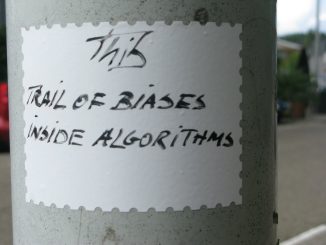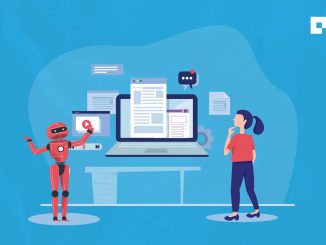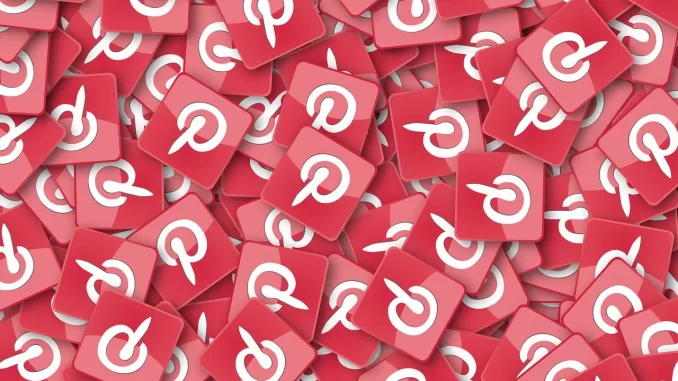
Introduction
This essay will study Pinterest, a platform business that has built considerable users and thrived. It will cover Pinterest’s overview, basic use, and the way it makes money. Then, it will explore the key features that have made Pinterest appealing, successful. Finally, it will discuss significant issues Pinterest faces related to platform use and within the company.
What is Pinterest?
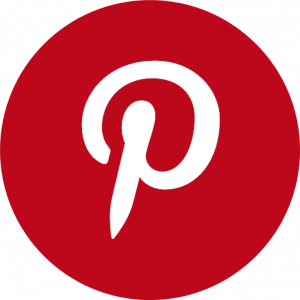
Pinterest is a platform business created by Paul Sciarra, Evan Sharp, and Ben Silbermann in 2009, which serves visual media and is described as a “virtual discovery, collection and storage tool” (Hanson, 2016, p. 279). It allows users to curate and gather images and videos for common interests, making them organised, convenient to find, and stimulate inspiration in an integrated way. As of July 2021, Pinterest had over 470 million monthly active users, ranking 14th among social networks worldwide (Statista, 2021). The business generated revenues of US$1.6 billion in 2020, an increase of over 45% year-on-year (Iqbal, 2021). Thus it can be seen that, Pinterest has been successful and is gaining momentum.
Basic use
Pin
A Pin is similar to a visual bookmark of an image or a video. Users can upload content to create a Pin or grab and store what they like on the Internet as a Pin. It contains the title, media preview, creator, description, and a link to the source site (if any).
Board
A Board is a collection of multiple Pins. Users can sort Pins into Boards they created. They can freely name and arrange boards on their profiles, add dates and notes to boards, set them to public or private, or collaborate with others, creating Group Boards.
Similar to many social networks, users can follow others on Pinterest, send private messages, and comment on Pins. They can also follow Boards. By searching for keywords, users can find relevant visual media shared on Pinterest.
How does Pinterest make money?
Pinterest only makes money through the digital advertising business. In 2013, Pinterest released its new feature, “Promoted Pins,” which are sponsored by advertisers (Pahwa, 2020). They look like ordinary pins but include a “Promoted by” label for distinguishing (see Figure 2), being in line with the significant provision inserted in the AANA Codes, a guideline for advertising practice in Australia, that “Advertising or Marketing Communication must be clearly distinguishable as such to the relevant audience” (AANA, 2016).

Promoted Pins are for various marketing purposes, such as improving brand awareness, gaining traffic, encouraging app installation. They appear in users’ home feeds and search results. Their reach depends on the bid made by the sponsor, and Pinterest uses the common digital monetisation models for pricing: CPC, CPM, CPA, CPV (InnovationTatics, 2019).
What makes Pinterest appealing and successful?
There are some key points enabling this business to be competitive, getting a foothold in the market.
Pinterest is all for visual communication. It uses visual media to draw user attention and drive them to think about the message behind it, and such an indirect persuasion allows pins to likely inspire people, being considered meaningful and valuable, are stored or spread (Hung, Chan & Chan, 2019). Therefore, Pinterest is very suitable for content that is good to explore from visual messages, such as decoration (see Figure 3), clothing collocation.

Pinterest is also regarded as an online tool for organising visual content. When enjoying visual content from other sites, users can directly select to “Pin” it to Pinterest, automatically creating a Pin with the source link, and then sort and organise it on their Boards. This process is applicable to visual works from all over the Internet and is very convenient, with no download required.
Most importantly, differing from platforms like Facebook and Twitter, which have the primary motive of interpersonal connections between users, Pinterest focuses on connecting users with content related to their interests (Pahwa, 2020) and bringing together common themes and interests. In this way, Pinterest is useful to plan a thematic project, such as preparing tourist spots (see Figure 4). And, such interest-based communication promotes all kinds of content on Pinterest to gain a relevant audience and stable activity, which is conducive to building loyalty and motivating users’ desire to share.
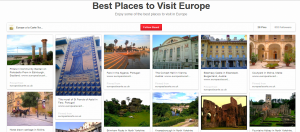
Mensell and Steinmueller (2020) argued that there are trade-offs between a large audience, some of whom would have interest in an advertising message, and a more specialised audience containing individuals with interest in a specific advertising message; platform businesses need to develop models for predicting users, to identify the target audience that would be interested in specific messages from each advertiser. Pinterest’s characteristic has let it naturally achieve this, making the structure of advertising targeting (Hung, Chan & Chan, 2019), because Pinterest has been connecting users’ common preferences, which creates niche markets for advertisers to exploit. It can make ads on Pinterest better reach its potential consumers and gain a higher click-through rate and conversions. Figure 5 shows a conceptual view of the Pinterest Taste Graph (Gonçalves et al, 2019), a targeting strategy offered to assist advertisers, presenting the process by which advertisers tap into consumers with specific interests based on Pins.
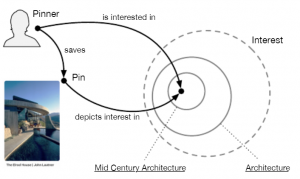
Concerns about Pinterest
Copyright issue
As a content-sharing platform, Pinterest is hardly immune to copyright issues. As mentioned above, Pinterest users are encouraged to “pin” works directly from other sites, so that the automatic Pin with the link attached just presents a shortcut to the original work. Otherwise, viewers could not know or jump to the source or might think that the work is created by the uploader, which will infringe the copyright owner’s interest.
However, it still raised the dissatisfaction of some creators, who do not want their work to be “pinned” and hosted on Pinterest. The criticisms has motivated Pinterest to offer an opt-out code that allowed webmasters to bar the content from being “pinned”; unfortunately, it could not be applied to all sites (Bailey, 2021). Also, there are users who create new Pins by downloading then re-uploading others’ works without permission.
According to Pinterest’s copyright policy, which complies with Digital Millennium Copyright Act, copyright owners who find their copyright infringed can visit the Copyright page and fill out a complaint form to submit a removal notice (Pinterest, 2021). Beyond this basic, inefficient approach, Pinterest had not come up with any new solution for years. At the same time, many other content-sharing platforms have designed automated systems, such as the “Content ID”, for detecting and preventing copyright infringement at the time of posting, with YouTube being a role model of this (Suzor, 2019).
Half a year ago, Pinterest finally launched its Content Claiming Portal, through which copyright owners can fill out an application form, and if approved, they can submit original content and select how it can be used on Pinterest from three choices: Mine Only, Website Only, Block All (Bailey, 2021). Compared with other mature Content ID, this system has more limitations and fewer options in this early period, with its ability to detect modified content being not clear (Bailey, 2021). We look forward to seeing this change develop in the future.
Workplace discrimination
Widely-known internal issues within the company would also negatively impact the platform’s reputation and audience favorability. In June 2020, two black women who were Pinterest’ former employees spoke out against their experiences of racism when working for Pinterest (Paul, 2021). Later, Pinterest’s former chief operating officer Françoise filed a lawsuit against the company and published a blog post to expose the discriminatory, misogynistic work environment at Pinterest; hundreds of Pinterest employees went on a virtual walkout and signed a petition to show their support for these allegations (Neate, 2020).
In response, Pinterest’s CEO showed support for the Silenced No More Act that encourages transparency and expands protections for employees speaking out about workplace discrimination, and stated that Pinterest wanted every employee to feel safe, supported, and empowered to raise any concerns about their work experience (Paul, 2021). To actively create an equitable and inclusive workplace, the Special Committee of the Board has published more recommendations and started to implement them in 2021 (Pinterest, 2020).
A Final Note
With the above features, Pinterest is attracting more and more visual enthusiasts and advertisers, which helps it make profits. Also, Pinterest faces some issues, and the company has implemented some countermeasures but still have a long way to go.
References
AANA. (2016). Clearly Distinguishable Advertising. Retrieved from http://aana.com.au/content/uploads/2017/01/AANA_Distinguishable-Advertising-Best-Practice-Guideline__Final.pdf
Bailey, J. (2021). Pinterest Launches Content ID for Images. Retrieved October 11, 2021, from https://www.plagiarismtoday.com/2021/04/21/pinterest-launches-content-id-for-images/
Gonçalves, R. S., Horridge, M., Li, R., Liu, Y., Musen, M. A., Nyulas, C. I., Obamos, E., Shrouty, D., & Temple, D. (2019). Use of OWL and Semantic Web Technologies at Pinterest. In The Semantic Web – ISWC 2019 (pp. 418–435). Cham: Springer. https://doi.org/10.1007/978-3-030-30796-7_26
Hanson, J. (2016). Pinterest. In The Social Media Revolution: An Economic Encyclopedia of Friending, Following, Texting, and Connecting (pp. 279–279). Englewood: ABC-CLIO, LLC.
Hung, E. C. K., Chan, A. Y. T., & Chan, R. C. Y. (2018). A Study of Rules, Structures, Features, and Biases in the New Media for Digital Advertising for the Development of New Media Ontology. In Advances in Human Factors in Communication of Design (pp. 88–92). Cham: Springer. https://doi.org/10.1007/978-3-319-93888-2_9
InnovationTatics. (2019). Pinterest Business Model Canvas – capture market share as a late entrant. Retrieved October 10, 2021, from https://innovationtactics.com/pinterest-business-model-canvas/
Iqbal, M. (2021). Pinterest Revenue and Usage Statistics. Retrieved October 9, 2021, from https://www.businessofapps.com/data/pinterest-statistics/
Mansell, R. & Steinmueller, W. E. (2020). Economic analysis of platforms. In Advanced Introduction to Platform Economics (pp. 35-54). Cheltenham, UK : Edward Elgar Publishing.
Neate, R. (2020). Pinterest pays $20m to settle gender discrimination lawsuit. Retrieved October 11, 2021 from https://www.theguardian.com/technology/2020/dec/15/pinterest-to-pay-20m-to-settle-gender-discrimination-lawsuit
Pahwa, A. (2020). How Does Pinterest Make Money? | Pinterest Business Model. Retrieved October 11, 2021 from https://www.feedough.com/how-does-pinterest-make-money/
Paul, K. (2021). She broke her NDA to speak out against Pinterest. Now she’s helping others come forward. Retrieved October 11, 2021, from https://www.theguardian.com/technology/2021/may/10/pinterest-discrimination-ifeoma-ozoma-nda
Pinterest. (2020). Statement from the Special Committee of the Board. Retrieved October 11, 2021, from https://newsroom.pinterest.com/en/post/statement-from-the-special-committee-of-the-board
Pinterest. (2021). Copyright. Retrieved October 11, 2021, from https://policy.pinterest.com/en/copyright
Statista. (2021). Most popular social networks worldwide as of July 2021, ranked by number of active users. Retrieved October 9, 2021, from https://www.statista.com/statistics/272014/global-social-networks-ranked-by-number-of-users/
Suzor, N. P. (2019). How Copyright Shaped the Internet. In Lawless: The Secret Rules That Govern our Digital Lives (pp. 59-78). Cambridge: Cambridge University Press.

This work is licensed under a Creative Commons Attribution-NonCommercial-NoDerivatives 4.0 International License.
